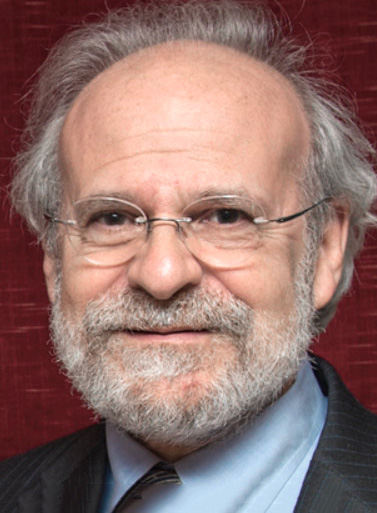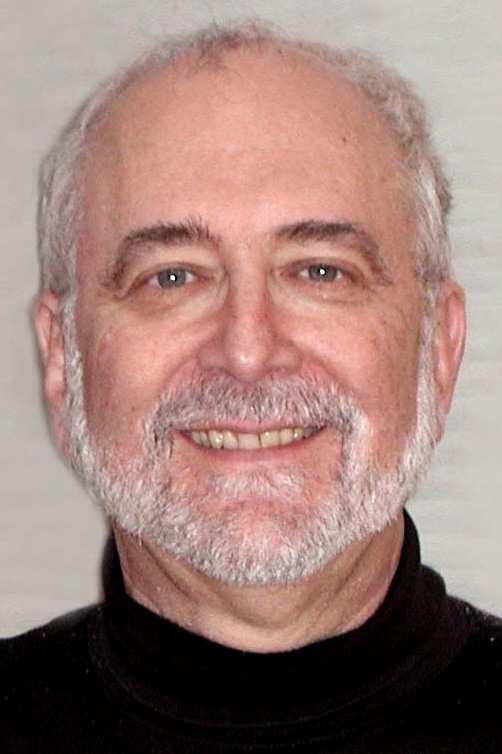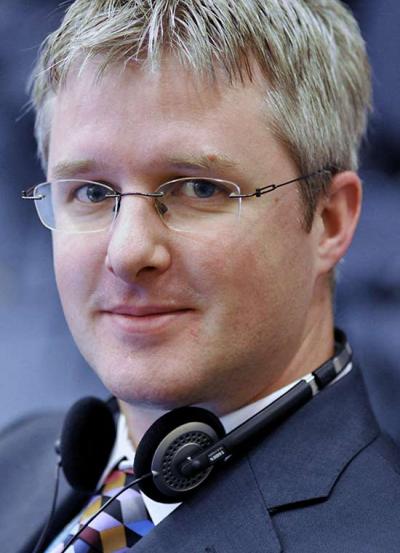

 When I want to go to a website, I just type in the URL, and I'm there. Sure, we had to get a subscription from a service provider and set up our devices, but that was a one-time thing. As we move into a world of many connected devices, it's no longer a one-time thing. Today, creating connected devices and services requires thinking about all the mechanics and networking and onboarding and providers.
When I want to go to a website, I just type in the URL, and I'm there. Sure, we had to get a subscription from a service provider and set up our devices, but that was a one-time thing. As we move into a world of many connected devices, it's no longer a one-time thing. Today, creating connected devices and services requires thinking about all the mechanics and networking and onboarding and providers.
 A little over 25 years ago, the Internet Society proposed that they assume responsibility for the DARPA Internet Protocol (IP) specifications Intellectual Property Rights (IPR) that were being evolved by the Internet Engineering Task Force (IETF) to facilitate their use by the mainstream network communication standards bodies and providers. Last week, the IETF, in an attempt to fend off alternative Internet Protocols emerging in the 5G ecosystem and create a standards monopoly, asserted...
A little over 25 years ago, the Internet Society proposed that they assume responsibility for the DARPA Internet Protocol (IP) specifications Intellectual Property Rights (IPR) that were being evolved by the Internet Engineering Task Force (IETF) to facilitate their use by the mainstream network communication standards bodies and providers. Last week, the IETF, in an attempt to fend off alternative Internet Protocols emerging in the 5G ecosystem and create a standards monopoly, asserted...
 Reading up on COVID-19 and Zoom/Boris Johnson outcry yesterday, an analogy struck me between the two: the lack of testing. In both cases, to truly know how safe and secure we are, testing needs to be stepped up considerably. This post focuses on cybersecurity. Over the past days and weeks, more and more organisations have switched to digital products and services to sustain working from home, to keep productivity up and to be connected.
Reading up on COVID-19 and Zoom/Boris Johnson outcry yesterday, an analogy struck me between the two: the lack of testing. In both cases, to truly know how safe and secure we are, testing needs to be stepped up considerably. This post focuses on cybersecurity. Over the past days and weeks, more and more organisations have switched to digital products and services to sustain working from home, to keep productivity up and to be connected.
The last few weeks have reinforced the importance of modern communication networks to societies. Health care providers, schools, governments, and businesses all rely on networks that enable us to connect and collaborate remotely. Had we encountered a similar pandemic ten years ago, we would not have been able to continue our activities on the level that is possible today.
 Usenet is 40 years old. Did we get it right, way back when? What could/should we have done differently, with the technology of the time and with what we should have known or could feasibly have learned? And what are the lessons for today? A few things were obviously right, even in retrospect. For the expected volume of communications and expected connectivity, a flooding algorithm was the only real choice.
Usenet is 40 years old. Did we get it right, way back when? What could/should we have done differently, with the technology of the time and with what we should have known or could feasibly have learned? And what are the lessons for today? A few things were obviously right, even in retrospect. For the expected volume of communications and expected connectivity, a flooding algorithm was the only real choice.
 The Great Renaming was a significant event in Usenet history since it involved issues of technology, money, and governance. From a personal perspective -- and remember that this series of blog posts is purely my recollections – it also marked the end of my "official" involvement in "running" Usenet. I put "running" in quotation marks in the previous sentence because of the difficulty of actually controlling a non-hierarchical, distributed system with no built-in, authenticated control mechanisms.
The Great Renaming was a significant event in Usenet history since it involved issues of technology, money, and governance. From a personal perspective -- and remember that this series of blog posts is purely my recollections – it also marked the end of my "official" involvement in "running" Usenet. I put "running" in quotation marks in the previous sentence because of the difficulty of actually controlling a non-hierarchical, distributed system with no built-in, authenticated control mechanisms.
 Anyone that has attended a meeting of the Internet Engineering Task Force (IETF) will know that the somewhat dry topic of internet protocols is often the source of passionate disagreement. But rarely does that debate extend beyond the confines of internet engineers. That has not been the case with a new protocol which aims to make the Internet's underlying domain name system more secure by default.
Anyone that has attended a meeting of the Internet Engineering Task Force (IETF) will know that the somewhat dry topic of internet protocols is often the source of passionate disagreement. But rarely does that debate extend beyond the confines of internet engineers. That has not been the case with a new protocol which aims to make the Internet's underlying domain name system more secure by default.
 For quite a while, it looked like my prediction – one to two articles per day – was overly optimistic. By summer, there were only four new sites: Reed College, University of Oklahoma (at least, I think that that's what uucp node uok is), vax135, another Bell Labs machine – and, cruciallyy, U.C. Berkeley, which had a uucp connection to Bell Labs Research and was on the ARPANET.
For quite a while, it looked like my prediction – one to two articles per day – was overly optimistic. By summer, there were only four new sites: Reed College, University of Oklahoma (at least, I think that that's what uucp node uok is), vax135, another Bell Labs machine – and, cruciallyy, U.C. Berkeley, which had a uucp connection to Bell Labs Research and was on the ARPANET.
 Our goal was to announce Usenet at the January, 1980 Usenix meeting. In those days, Usenix met at universities; it was a small, comaparatively informal organization, and didn't require hotel meeting rooms and the like. (I don't know just when Usenix started being a formal academic-style conference; I do know that it was no later than 1984, since I was on the program committee that year for what would later be called the Annual Technical Conference.)
Our goal was to announce Usenet at the January, 1980 Usenix meeting. In those days, Usenix met at universities; it was a small, comaparatively informal organization, and didn't require hotel meeting rooms and the like. (I don't know just when Usenix started being a formal academic-style conference; I do know that it was no later than 1984, since I was on the program committee that year for what would later be called the Annual Technical Conference.)
 We knew that Usenet needed some sort of management system, and we knew that that would require some sort of authentication, for users, sites, and perhaps posts. We didn't add any, though -- and why we didn't is an interesting story. The obvious solution was something involving public key cryptography, which we (the original developers of the protocol: Tom Truscott, the late Jim Ellis, and myself) knew about: all good geeks at the time had seen Martin Gardner's "Mathematical Games" column...
We knew that Usenet needed some sort of management system, and we knew that that would require some sort of authentication, for users, sites, and perhaps posts. We didn't add any, though -- and why we didn't is an interesting story. The obvious solution was something involving public key cryptography, which we (the original developers of the protocol: Tom Truscott, the late Jim Ellis, and myself) knew about: all good geeks at the time had seen Martin Gardner's "Mathematical Games" column...